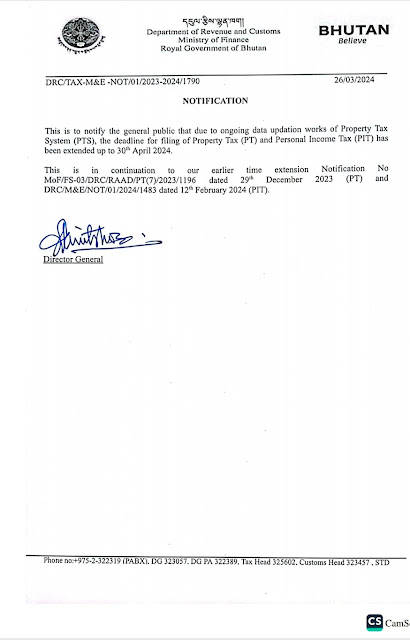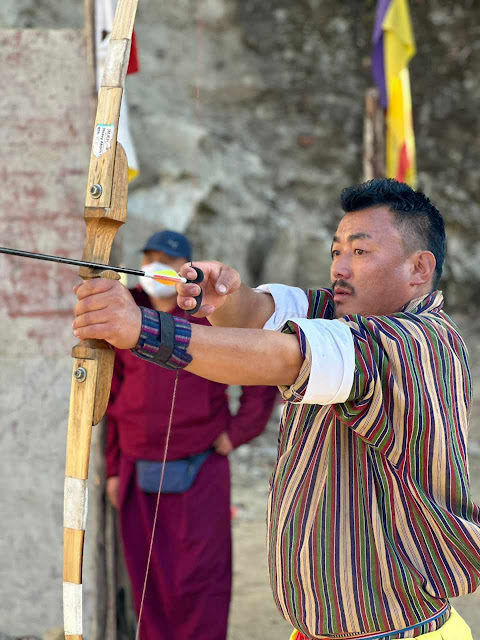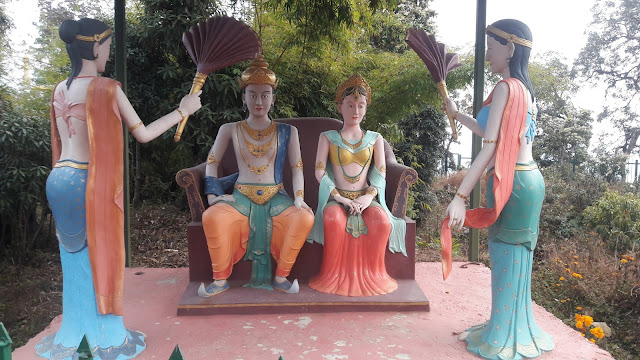Sae Dopola - The Last Trashigangpa
Dzongpon Dasho Thinley Tobgyel is one of the revered man in the history of Bhutan. Commonly known as Sae Dopola, he was born to Dzongpon Sonam Tshering and Chomo in the year of 1891 at Kurtoe, Sugbee. It is believed that he often suffered from illness during the childhood days and in order to dispel the sickness, he entrusted and worshipped on the big stone at his village and thus got his pet name ‘Dopola’. To these days, we remember this great figure in the name of Sae Dopola. Dasho Thinley Tobgyel was the eldest among the three children. Ugyen Lhamo and Yangchen were the two daughters.
Sae Dopola married his first wife Lemo who was from Jagetsawa in Trongsa after he took the post of Trashigang Dzongpon. Lemo gave birth to three daughters; Chimmi who was the eldest daughter, Choden the middle one and Karma Yangzom the youngest daughter who is Gyaltsuen Jetsun Pema Wangchuck’s grandmother. The present Gup of Kanglung, Kinzang, is the son of Sae Dopola’s eldest daughter Chimmi.
However, history cites that Sae Dopola married for second time with the three daughters of Dagana Dzongpon. He met Yeshi, Deki and Sangey, the three daughters of Dagana Dzongpon, while on trade in Gudhama (Samdrup Jongkhar) which was a trade hub for people in Eastern Bhutan. It was a love at first sight, however more than considering this, it’s believed that the reason for his second marriage was to have a son. There were no children born from the two younger sisters, Deki and Sangay but the eldest sister Yeshi gave birth to only son Karma Tenzin.
Prior to becoming Trashigang Dzongpon, after Sae Dopola returned from Tibet, he served as Changup to King Ugyen Wangchuk who passed away after serving for three years. Later, he continued to serve the then Trongsa Ponlop, Jigme Wangchuk for two years and when the crown prince was enthroned as the successive reign on March 14, 1927, Sae Dopola, who was 37 years old also succeeded to become the next heir to his father as Tashigang Dzongpon.
In the research article, there are mentions about Sae Dopola from old age people that they described him as ‘a man of dignified character, fair and just towards the general people and his intelligence could understand the adversity of a person even by looking at the face.’ So, normally people referred him as by the title ‘Pon’. He initiated the system of granting lands to the landless people from the wealthy landlords.
Sae Dopola had a very high degree of power and earned enormous respects and fidelity from the general subjects. Tashigang was a large province and basically, Sae Dopola exercised power over three Dzongkhags including Tashigang, Pemagatshel and Trashiyangtse.
Sae Dopola has played a big role in renovating the present Trashigang Dzong which was very urgently in need of renovation. Dasho Dopola is said to have requested the second Druk Gyalpo Jigme Wangchuk for the dzong renovation and upon his request, ‘His Majesty issued a strong royal edict ordering the people of Trashigang to render their customary services in carrying out the repair work.’ It was in the year 1937, during the Male Fire Dragon year, with the involvement of Trashigang Dzongkhag’s regional heads and landlords, they organized the labor forces and rebuilt the dzong from the foundation till the roof top within two years. Lama Sonam Zangpo from Kurto, Lama Kota from Trashigang Khalong and Lama Monlam Rabzang were also revered figure who contributed significantly for the Trashigang Dzong. The consecration ceremony of the new dzong was solemnized by the Chabje Dudjom Rinpoche Jigdrel Yeshi Dorji along with Lama Monlam Rabzang, Lama Sonam Zangpo, Lama Kota and Lam Neten in 1939.
Aside the dzongs, Sae Dopola also built several lhakhangs as Yonphula Ugyen Dho Ngag Choeling Goenpa, Lhakhang Samten Choeling Goenpa and his own residence, the Rongthong Phuentshog Norbu Gang Nagtshang. Sae Dopola also instructed Lama Sonam Zangpo to erect the exact replica of Lhasa Jaw in Yonphula Ugyen Dho Ngag Choeling Goenpa and people can see this to these days even in Yonphula Lhakhang. He also initiated the renovation of historical Chazam. Therefore, we see Sae Dopola’s accomplishment today is very significant for the country like ours.
In 1952, Druk Gyalpo Jigme Wangchuk succumbed to death at the Kuenga Rabten Palace in Trongsa. It is said that Sae Dopola made his presence to attend the king’s funeral rites in Bumthang and two days after the demise of the second king, Sae Dopola also passed away in 1952.
Photo courtesy: Sangay Tenzin’s Facebook page
Note: This piece is written with the reference from Mr. Ugyen Wangdi’s story of “Sae Dopola, The Last Trashigangpa” and Lopon Dung Dorji’s work on “THE FORTRESS OF TRASHIGANG (AUSPICIOUS HILL)” and few references from Kuensel.































































